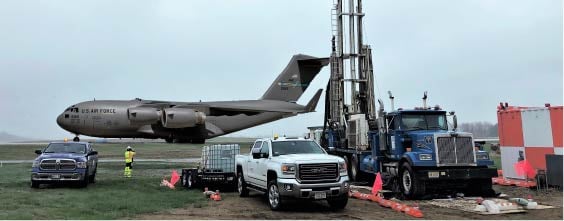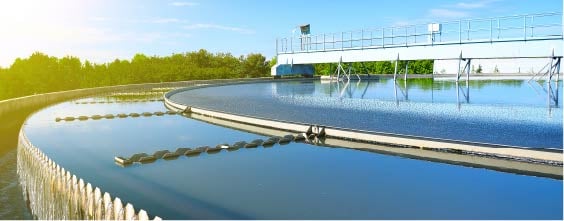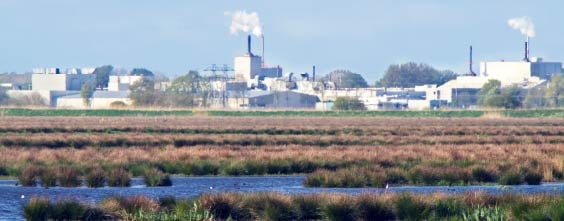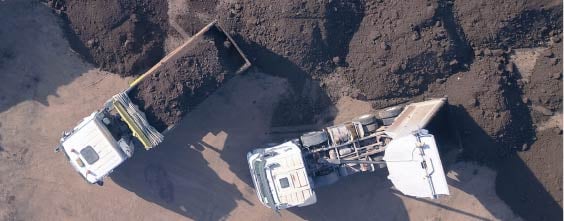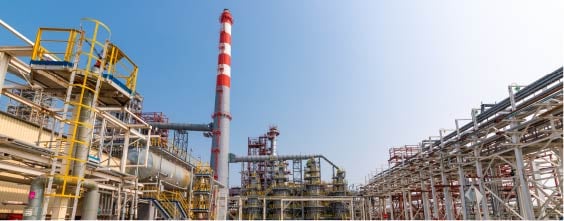Our team of professionals have been addressing Per- and Polyfluoroalkyl Substances (PFAS) impacts since the days when this class of contaminants was still unknown to many. Today, we continue to lead the way with practical, innovative approaches and advanced destructive remediation technologies to help clients overcome the challenges posed by PFAS.


Strategic Planning

Permitting Support

Mitigation Management

Remediation & Clean-Up
RELATED PROJECTS
Through innovation and applied research into PFAS testing, assessment and treatment, we have been breaking new ground with practical and efficient solutions for the investigation, remediation and risk management of these challenging contaminants.
Pease Air Force Base PFAS
Protecting public health through innovative groundwater treatment.

A database of known PFAS associations with industries, processes and products to evaluate potential PFAS within supply chains and likelihood of legacy environmental releases at subject sites and nearby facilities.
We have optimized a multi-tiered desktop protocol that marries the likelihood of a historic PFAS release with potential receptor impacts. The protocol is risk-based, client-customizable and identifies and ranks potential reputational risk and financial liability.
Our vulnerability services address increasing public pressure and regulatory scrutiny to remove PFAS from manufacturing and commerce through systematic and documented supply chain and operations assessment where PFAS and PFAS byproducts are identified and tracked through occupational exposure points and waste streams. Ultimately, action plans to eliminate PFAS risk are developed in concert with client goals.
Advanced analytical and sampling
We are adept with leveraging targeted and non-targeted analytical methods and advanced sampling techniques, including passive samplers and lysimeters, to gather information needed to build a complete picture of PFAS impacts.
Vapor Phase PFAS
Volatilization of short chain and neutral PFAS (e.g., fluorotelomer alcohols) is proving to be a major PFAS transport pathway that is rapidly gaining regulatory attention. WSP experts have the knowledge and experience to assess and mitigate PFAS vapor risks associated with landfills, residential and workplace vapor intrusion, and occupational exposure.
Automated and machine learning tools
The large volumes of data from PFAS testing programs make it difficult to categorize samples efficiently. Machine learning, a branch of artificial intelligence using statistical algorithms to learn from data, is helping to simplify this process.
Learn more >
Groundwater Plume Analytics®
Tools that mine existing data to better manage plumes with focus on cost effective resilient remedies.
Learn more >


Destructive treatment technologies
WSP has focused on the advancement of several PFAS treatment technologies with specific focus on destructive solutions to end PFAS cycling through the environment, lower costs and reduce liabilities. These include:
-
Super critical water oxidation: : WSP partnered with a supercritical water oxidation (SCWO) technology provider to verify and validate the on-site destruction and mineralization of PFAS remediation wastes (e.g., spent PFAS-laden ion exchange resin or GAC).
-
Plasma: Low-temperature plasma destruction of PFAS in high- concentration solutions. PFAS rise to the surface of the reactor vessels, assisted by argon gas diffusers, and are fully destroyed in a matter of hours.
Nature-based solutions
Nature-based solutions (NbS) leverage natural processes to tackle various challenges, benefiting both people and biodiversity. Learn how Nature based solutions are being used to address the PFAS challenge.
Learn more >
Separation and Stabilization Technologies
The WSP PFAS team has designed, operated, and maintained some of the first PFAS treatment systems, as well as developed and demonstrated separation, stabilization, and destruction technologies since 2015:
-
WSP treatability study labs
-
WSP treatment trailers
-
Full scale treatment systems
From small to large flows, from in-situ to ex-situ, from conventional to innovative technologies, we provide experience-based, scientifically advanced, economically efficient solutions tailored to each site to efficiently address PFAS.
WSP's risk assessors conduct multi-pathway PFAS risk assessments, specialize in dietary exposure evaluations, and routinely develop toxicology reviews and assessments.
WSP has developed a tool to assess the impact of climate change on PFAS contaminated sites for potential remedial options or treatment technologies already in operation. The tool helps with responsible and cost-effective decision-making, strategic planning, and risk management at the site and/or portfolio level. Climate change impacts specifically addressed by the tool include:
-
Temperature
-
Snow cover
-
Precipitation / storm events
-
Change in permafrost
-
Flora shift
-
Fauna shift
-
High winds
-
Erosion
-
Drought
-
Wildfires
-
Sea level rise / Artic Sea level change






